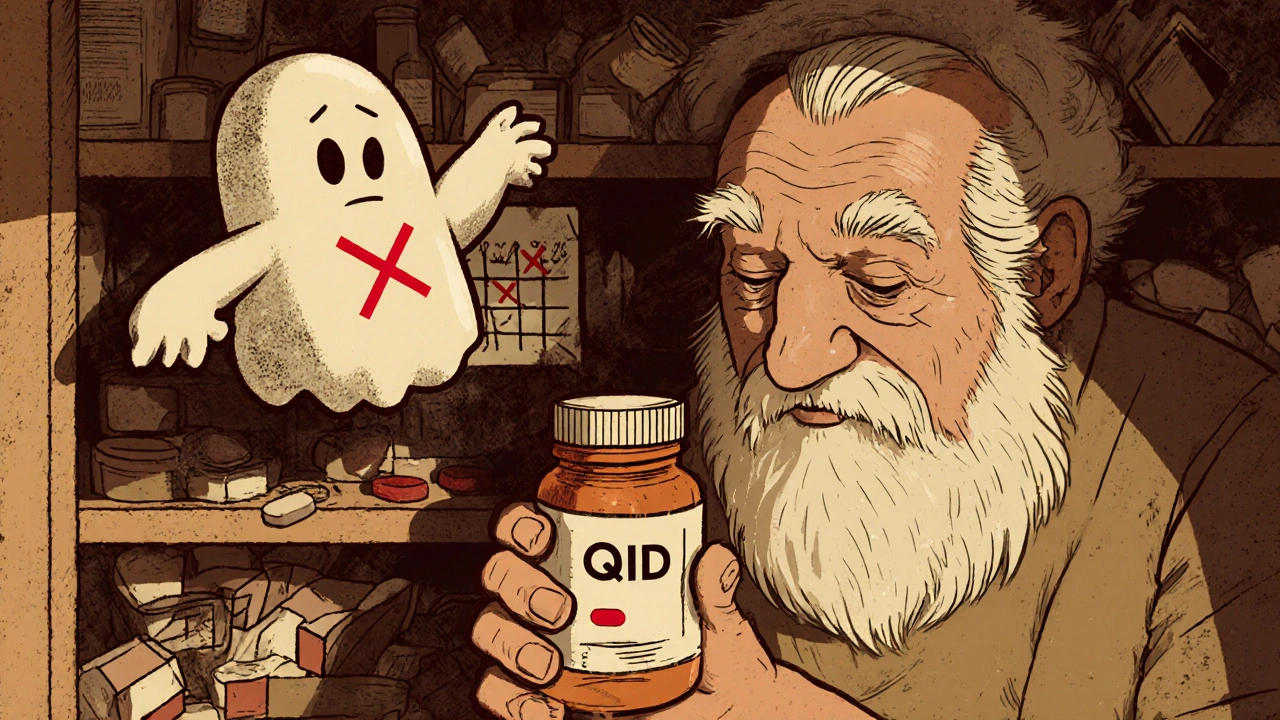Prescription Abbreviations: What They Mean and Why They Matter
When you see prescription abbreviations, shortened medical terms used by doctors and pharmacists to write orders quickly and clearly. Also known as medical shorthand, it’s the hidden language behind your pills—things like q.d., b.i.d., or t.i.d. that tell you how often to take your medicine. These aren’t just shortcuts. They’re part of a system that keeps pharmacies running smoothly, but if you don’t know what they mean, you could be taking your meds wrong—and that’s dangerous.
Take q.d., a Latin abbreviation meaning "once daily". Sounds simple, right? But some people mistake it for q.i.d. (four times a day), especially if handwriting is messy. Or consider p.r.n., which means "as needed". If you don’t know that, you might take your painkiller every hour instead of only when you really need it. These aren’t just confusing—they can cause overdoses, missed doses, or side effects that could’ve been avoided. Even sig, short for "signa," or the instructions written on the label, can be misread if you’re not familiar with the code. And it’s not just you—pharmacists and nurses rely on these too. A single typo or unclear abbreviation can lead to medication errors, which are one of the top causes of preventable hospital visits.
The posts below cover real situations where understanding these codes makes a difference. You’ll find guides on how to spot dangerous drug interactions, how dosing schedules affect your body, and why knowing the difference between a side effect and an allergy matters when you’re following a script. Some posts talk about how generic drugs are labeled, how copay cards interact with insurance rules, and how ECG monitoring is ordered using these same shorthand codes. Whether you’re managing diabetes, heart issues, mental health meds, or just trying to avoid a bad reaction, knowing what your prescription says—not just what it looks like—is a basic skill that keeps you safe.
There’s no need to memorize every abbreviation, but you should know the ones on your own scripts. Keep a list handy. Ask your pharmacist to explain anything unclear. And never guess. The system works best when you’re part of it—not just a passenger. Below, you’ll find detailed, real-world breakdowns of how these abbreviations show up in actual treatment plans, what they mean for your health, and how to protect yourself when things get confusing.
QD vs. QID: How Prescription Abbreviations Cause Dangerous Medication Errors and How to Prevent Them
QD and QID are dangerous prescription abbreviations that cause deadly dosing errors. Learn how they're misread, who's most at risk, and how healthcare systems and patients can prevent them with simple, proven changes.
Keep Reading
